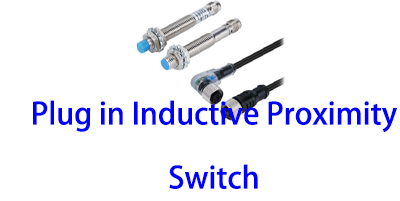What are the types of photoelectric switches?
 18 Jan 2024 click : 544
18 Jan 2024 click : 544A photoelectric switch is a switch that utilizes the photoelectric effect. According to the different detection methods, photoelectric switches can be divided into four types, namely, the through-beam (opposite) type, the diffuse reflection type, the mirror-reflective type and the slot type.

Through-beam photoelectric switch:
Composed of emitter and proximity switch, the structure of the two are separated from each other, in the case of the beam is interrupted will produce a switching signal change, the typical way is located in a unified axis photoelectric switch can be separated from each other up to 50 meters.
Characteristics: identify opaque reflective objects; effective interval is large, because the beam across the sensing interval time is only once; not easy to be disturbed, can be reliably suitable for use in the field or dusty environments; device consumption is high, the two units are necessary to lay the cable.
Diffuse reflective photoelectric switch:
Is when the switch transmits a beam of light, the target produces diffuse reflection, the transmitter and receiver constitute a single scale component, when there is enough combined light to return to the receiver, the switch state changes, the typical value of the action interval has been to 3 meters.
Characteristics: the effective action interval is determined by the target's reflective ability, determined by the target surface properties and color; smaller assembly expenses, when the switch consists of a single component, usually can be achieved coarse positioning; the use of the background press function to regulate the measurement interval; sensitive to the target on the dust and sensitive to the target has changed the reflective function.
Mirror-reflective photoelectric switch:
The case consisting of a emitter and a receiver is a scale configuration in which the light beam from the emitter is reflected at the opposite mirror, i.e., returned to the receiver, which produces a change in the switching signal when the light beam is interrupted. The period of passage of the light is twice the duration of the signal, with an effective action interval from 0.1 to 20 meters.
Characteristics: Discriminate opaque objects; Form a high effective interval range with the help of reflector components; Not easily disturbed, can be reliably and suitably used in the field or in dusty environments.
Slot photoelectric switch:
Slot photoelectric switch is usually the scale of the U-shaped structure, its transmitter and receiver are located on both sides of the U-shaped slot, and the formation of an optical axis, when the object to be detected through the U-shaped slot and blocking the optical axis, photoelectric switch produced by the detection of the switching signal.
Characteristics: Slot photoelectric switches are safe and reliable for detecting high-speed changes and distinguishing between transparent and semi-transparent objects.

.jpg)




